Has your riding been not as good as it could be because of a horse that incessantly pulls on the bit?
This common issue can transform a relaxing ride into a battle of wills, making riding an uncomfortable, even dangerous endeavor.
But worry no more!
In this comprehensive guide, we will go over the tried-and-true methods and tips to help solve this frustrating behavior.
From the seasoned equestrian to the novice rider, these strategies will enable you to create a stronger bond with your horse and better your riding experience.
Related Blog Post: What To Do If Your Horse Constantly Opens Their Mouth With A Bit!
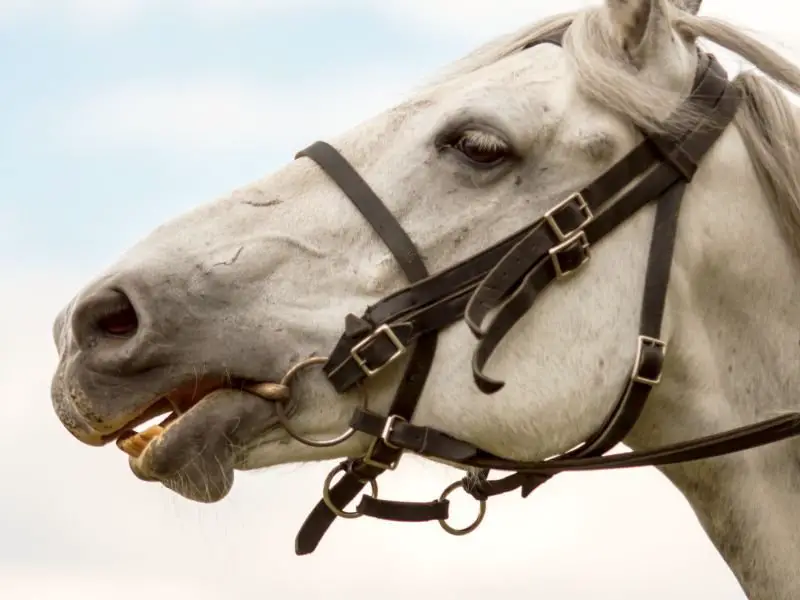
Pulling on the Bit vs. Leaning on the Bit
Let’s clarify two fundamental terms before we proceed – pulling on the bit and leaning on the bit.
It’s crucial to understand these distinct behaviors as they pose different challenges to riders and have unique underlying causes.
- Pulling on the bit is a term used when the horse attempts to wrestle the reins away from the rider’s control. This could be a reaction to the rider’s harsh hand movements, overly short reins, or the horse’s instinctive desire to lower its head. This resistance makes it challenging for the rider to maintain steady communication and control.
- On the other hand, leaning on the bit typically signifies a balance issue for the horse, although it can also be a response to oral discomfort or poor handling by the rider. In this case, the horse uses the bit as a support or anchor, exerting constant pressure and making it difficult for the rider to guide the horse effectively.
By understanding these two different behavior’s, you’ll be better equipped to identify the causes and implement the correct strategies to address them.
Remember, while both behavior’s are unwanted, they require different approaches due to their differing underlying issues.
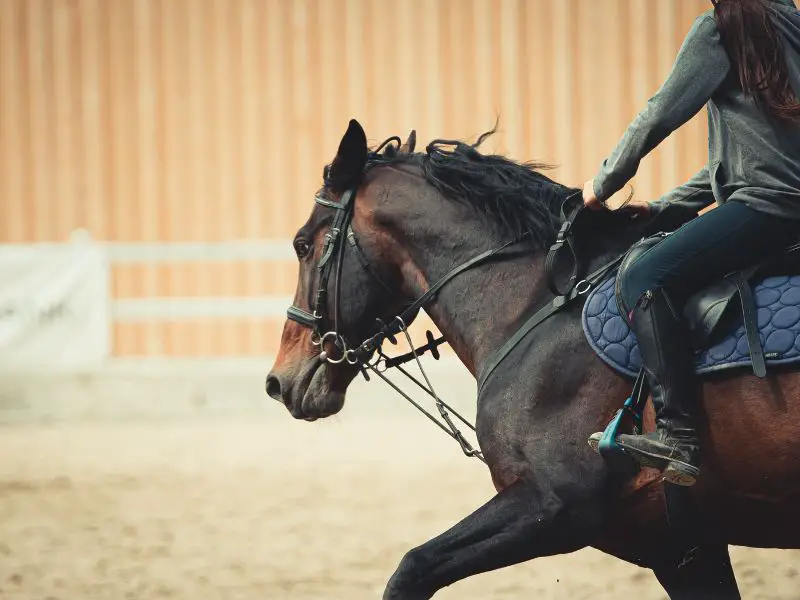
Understanding the Reasons for a Horse Pulling on the Bit
Unraveling why a horse might pull on the bit can illuminate the path to a solution.
This undesirable behavior can stem from several reasons, including:
- improper bit fitting
- mouth sensitivity
- lack of training
- fear or anxiety
More complex scenarios might involve underlying training issues or equine dentistry problems, such as discomfort caused by the horse’s teeth.
If the bit is causing discomfort or doesn’t fit correctly, the horse may resist it, leading to the horse pulling on the bit.
Mouth sensitivity varies among horses, and some may need more time or specific training techniques to get used to the bit.
At times, fear or anxiety might provoke a horse to pull on the bit, especially if it’s a reaction to previous traumatic experiences. In other cases, it may signal broader training issues that need addressing.
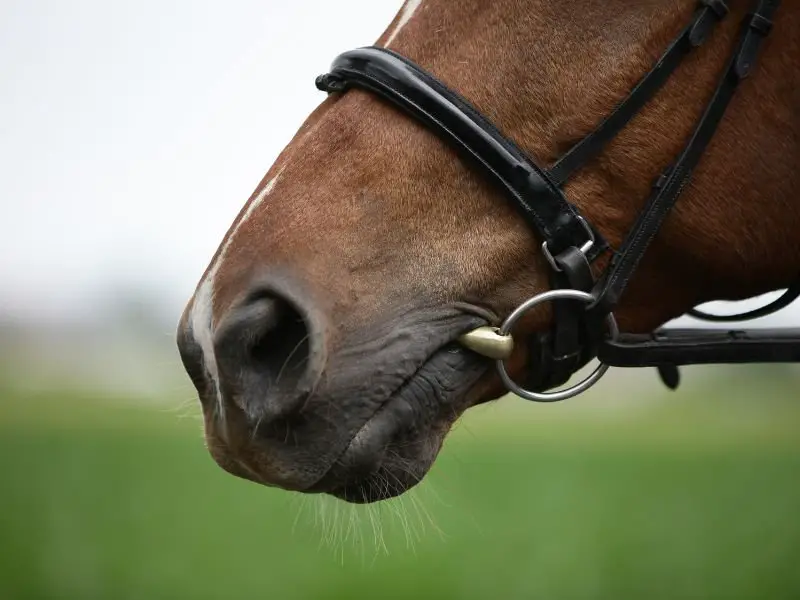
Steps to Stop a Horse from Pulling on the Bit
Now that we’ve laid the groundwork, let’s delve into effective bitting techniques for horses, aimed at preventing horse bit pulling and improving horse bit control.
Step 1: Ensure Proper Bit Fitting
Bit training for horses begins with a well-fitted bit and bridle.
The bit should be the correct size and constructed from a material that’s comfortable for your horse.
Proper placement in the horse’s mouth – on the tongue and bars – is equally critical. If you’re uncertain about the bit fitting, it’s wise to consult a qualified tack expert or a professional in equine dentistry.
Step 2: Teaching Acceptance of the Bit
With the bit properly fitted, it’s time to teach your horse to respond to light rein cues – the fundamentals of obedience training for horses.
Introduce gentle pressure on the reins, releasing them as soon as your horse responds correctly.
Over time, you can gradually increase the pressure, cultivating understanding and responsiveness. Remember, patience and consistency are the cornerstones of successful training.
Step 3: Implement Half-Halts
Half-halts serve as an effective technique in correcting bit pulling behavior and maintaining bit control.
When your horse starts pulling, swiftly yet firmly squeeze the reins to signal a half-halt.
This gesture prompts your horse to rebalance and refocus on your cues, fostering bit acceptance and preventing horse bit pulling.
Step 4: Guide the Horse’s Body with the Head
Always remember, during bending and turning exercises, your horse’s body should follow its head.
Use rein aids and your body position to steer the movements, deterring your horse from pulling against the bit.
Maintaining balanced riding and a sturdy rider position can enhance control and equine communication.
Step 5: Cultivate Consistency and Patience
Changing your horse’s behavior isn’t an overnight endeavor; it requires time and patience.
Stay consistent with your training approach, rewarding progress, and prevent your horse from becoming reliant on the contact by employing a “give and retake” of the reins.
Step 6: Introduce the Rein Back
The rein back technique is a handy tool in your training arsenal.
By teaching your horse that rein contact means to move the whole body back, not just tuck in its head, you improve their understanding of rein aids and boost responsiveness.
Step 7: Reward Progress and Consider Bitless Options
Reward your horse’s progress as it improves, and if the horse continues to pull on the bit, consider bitless options.
Bitless bridles can provide a more comfortable riding experience for some horses, though they aren’t a universal solution.
They might not be suitable for all horses or disciplines, so consult with a professional trainer or veterinarian to make an informed decision.
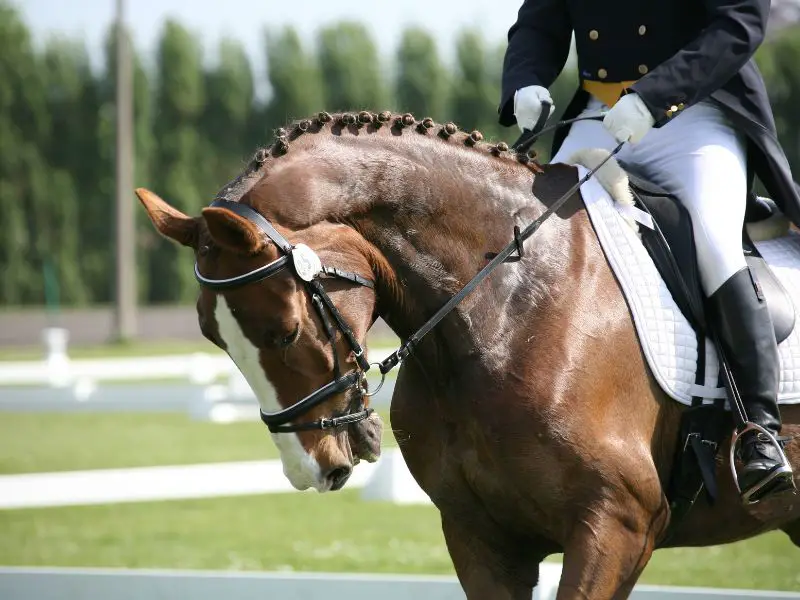
Conclusion On How To Stop Your Horse From Pulling On The Bit
Stopping a horse from pulling on the bit demands patience, consistency, and a deep understanding of your horse’s behavior.
Employing techniques like proper bit fitting, teaching acceptance of the bit, implementing half-halts, and introducing the rein back, you can significantly improve bit control and communication.
Remember that each horse is unique, and adjusting your training to their individual needs is crucial.
Don’t hesitate to explore bitless options with expert guidance if necessary.
With dedication and soft hands, you can foster a harmonious and enjoyable riding experience with your equine partner.
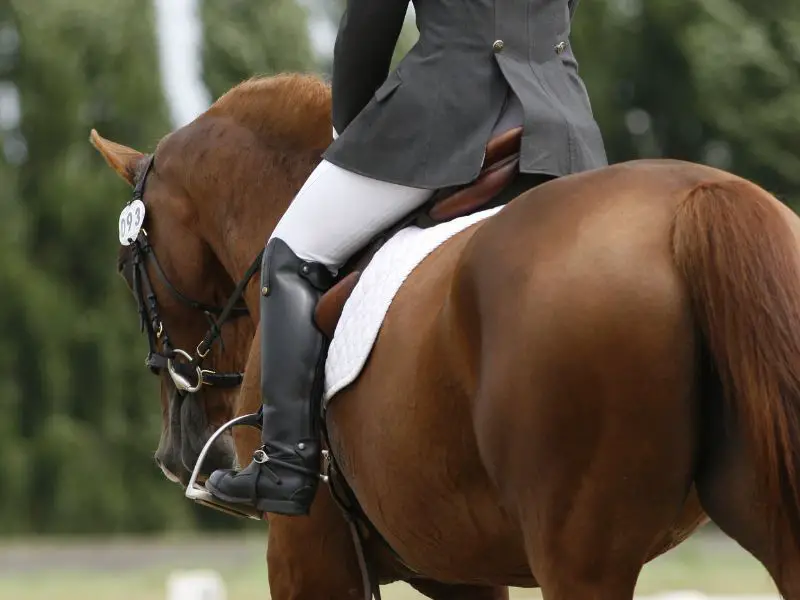
Frequently Asked Questions About Horses Pulling Bit
How can I tell if my horse is pulling or leaning on the bit?
When a horse pulls on the bit, it resists the rider’s cues, often yanking the reins or trying to run forward against the bit.
If a horse is leaning on the bit, it uses the bit for balance, placing constant, excessive weight or pressure on the bit.
Why does my horse keep pulling on the bit?
This could be due to various reasons, including discomfort from an improperly fitted bit, sensitivity in the horse’s mouth, lack of training, or a response to fear or anxiety.
In some cases, it may indicate broader training issues that need to be addressed.
What can I do if my horse continues to pull on the bit despite my efforts?
If your horse continues to pull on the bit despite using the techniques mentioned above, you may want to consider bitless options.
However, this is not a cure-all solution and may not be suitable for all horses or types of riding. It’s best to consult with a professional trainer or veterinarian for personalized advice
How long will it take for my horse to stop pulling on the bit?
Changing a horse’s behavior takes time, patience, and consistency.
The duration can vary depending on the horse, its previous experiences, and the specific issues causing the behavior.
Be patient and persistent in your training, and you’ll see improvements over time.
How can I make sure the bit is fitted properly?
A well-fitted bit should rest comfortably in your horse’s mouth without pinching the corners of the mouth or pressing too hard on the horse’s tongue and bars.
If you’re uncertain about the fitting, it’s best to seek advice from a qualified tack expert or a professional in equine dentistry.
Happy horse training!
Cheers, Kacey
P.S. Did you like this article? Gallop over to:

